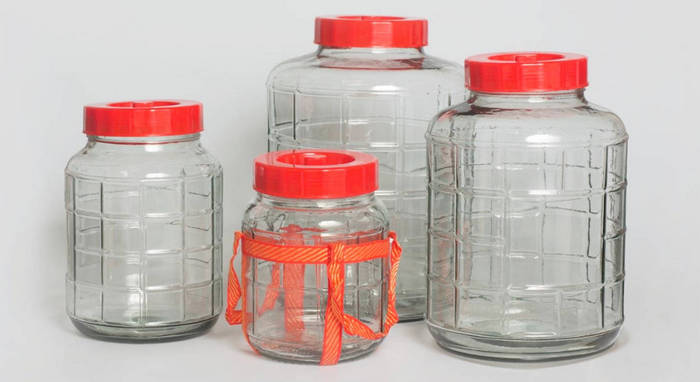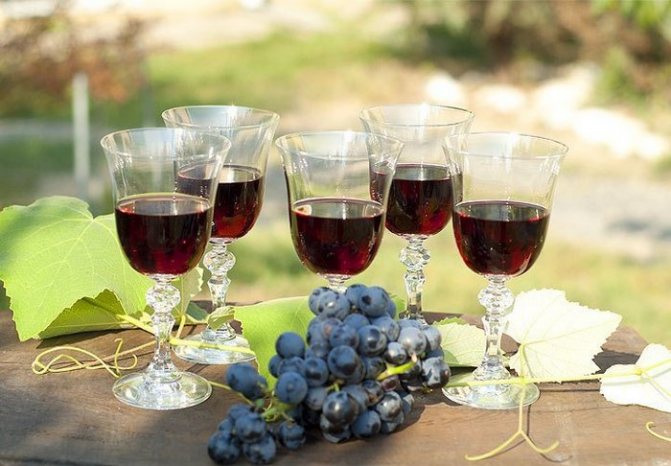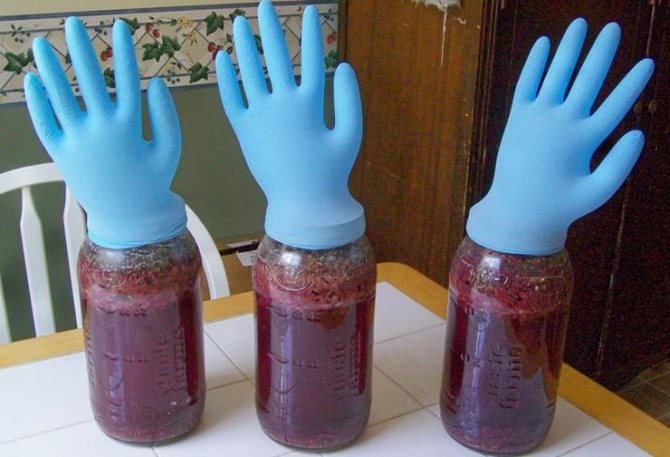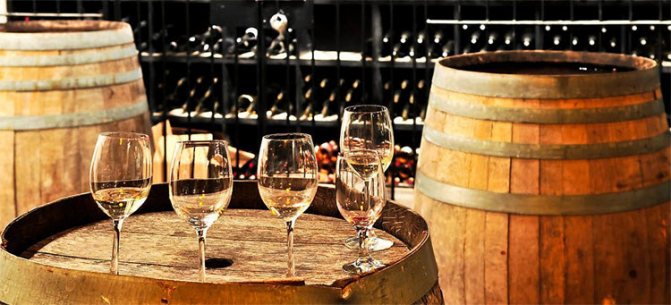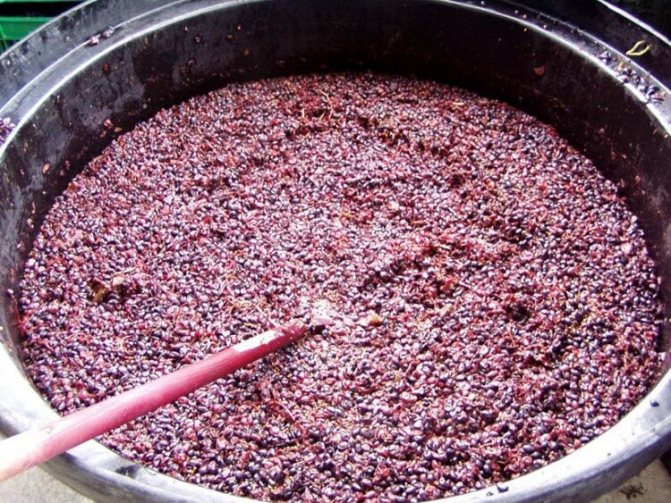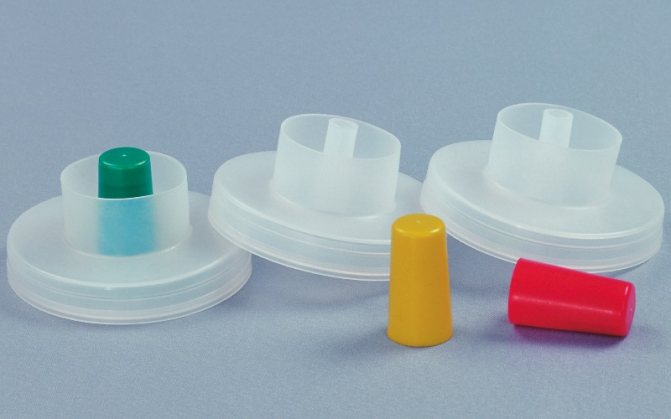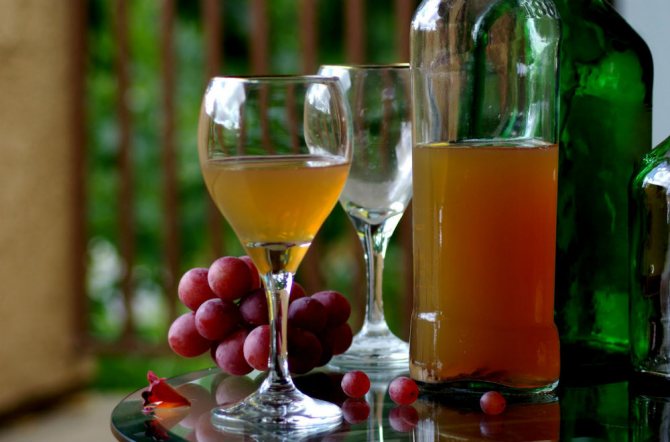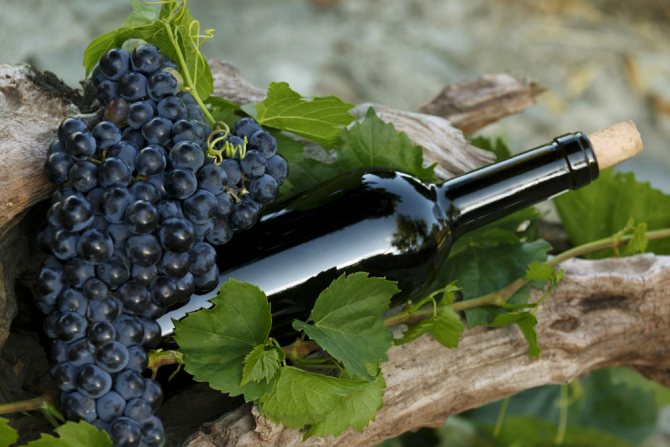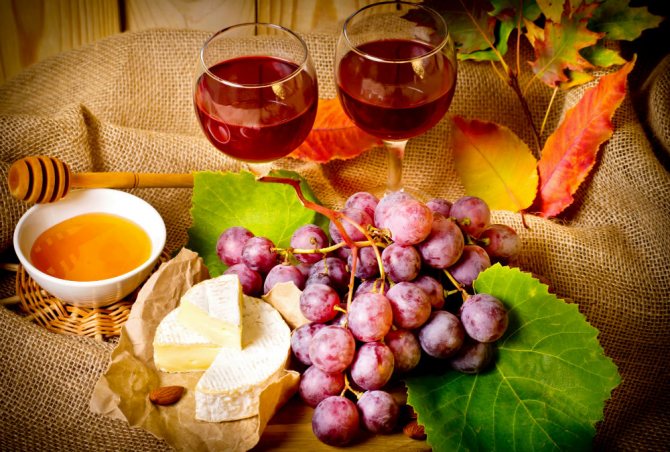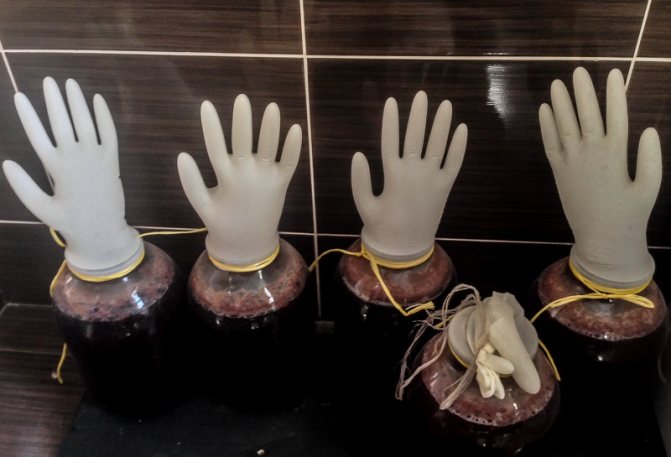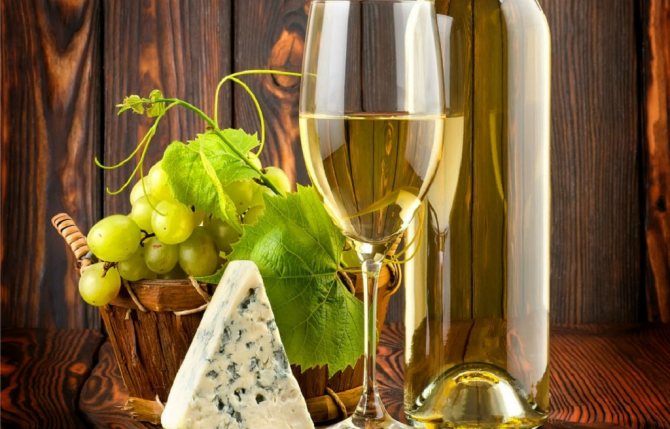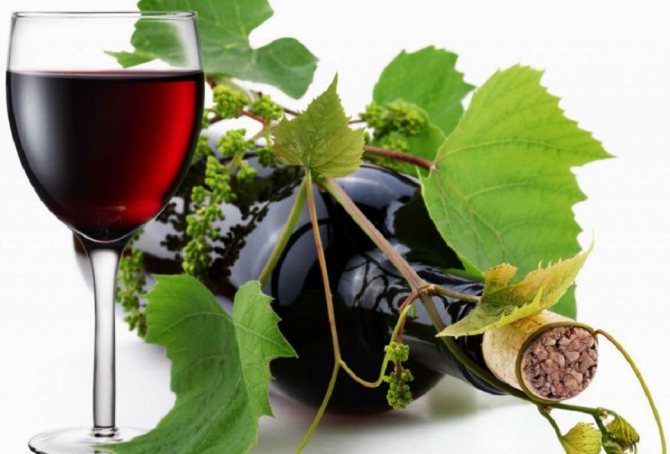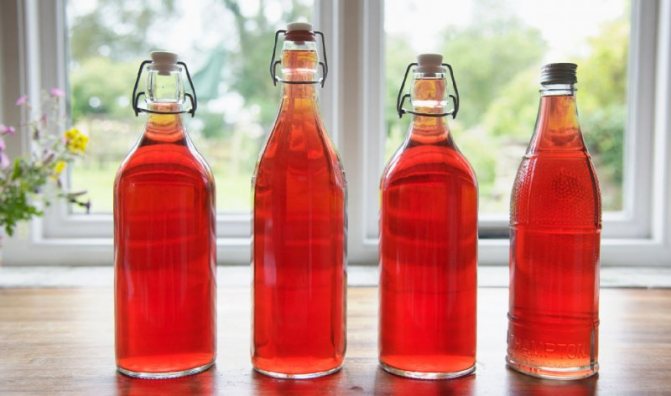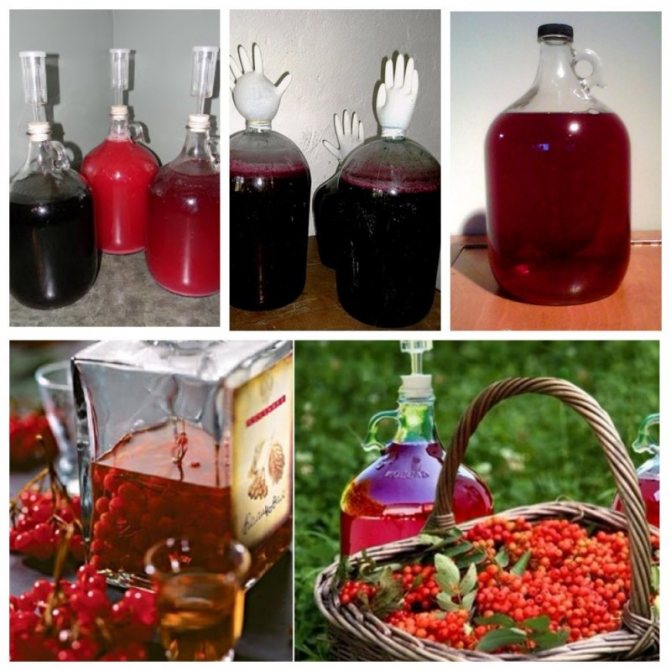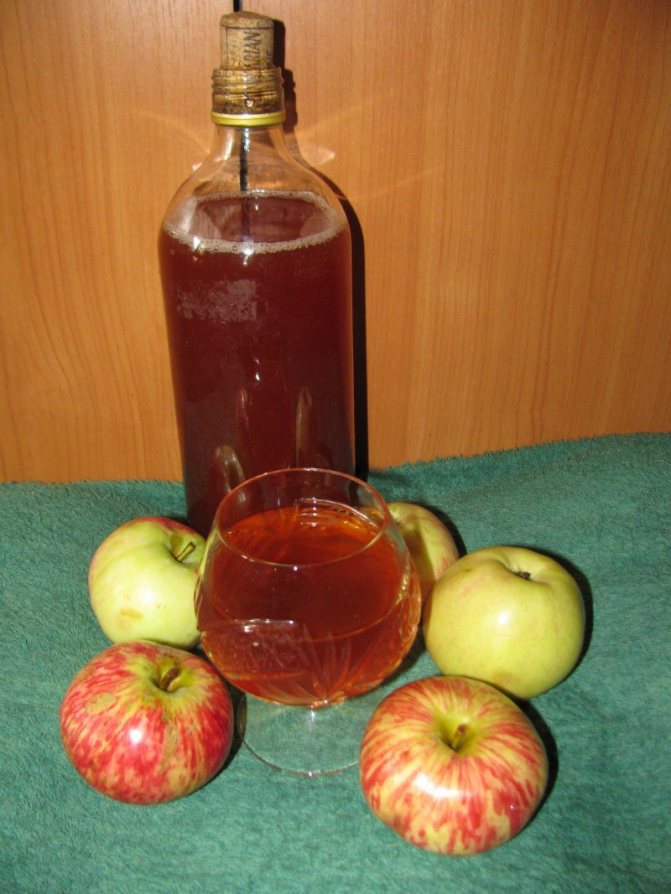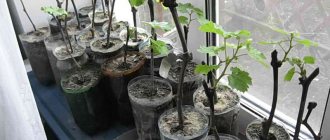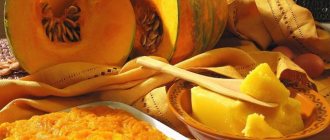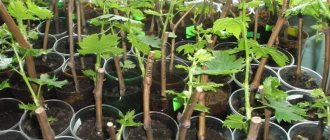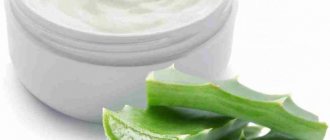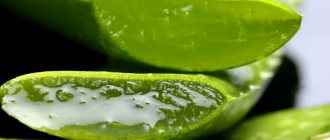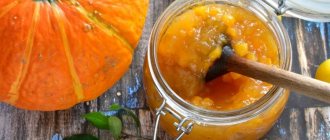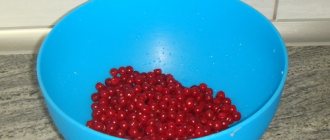According to connoisseurs of the drink, true wine should be made exclusively from grapes. The rest of the fruits and berries are not suitable for the production of a true product. It is also believed that making wine from grapes at home is quite difficult.
Today, on the Internet, you can find many opinions on this matter and no less of the recipes themselves, many of which cause bewilderment among winemakers. It is worth noting that it can take a long time before a beginner winemaker can make a good homemade wine. The manufacturing process is, although not complicated, but painstaking business. It is important to carefully and carefully perform each stage of production, otherwise there is a risk of irrevocably spoiling the drink. So, to the point.
Isabella grape wine - the best recipe at home
To understand the value of grape wine, you need to prepare it yourself at least once. Among the many recipes for preparing an alcoholic drink, one of the best is Isabella wine. It makes a very tasty drink. This is not surprising, because fully ripe berries are distinguished by their sweetness and juiciness. Many people like to just eat them for dessert.
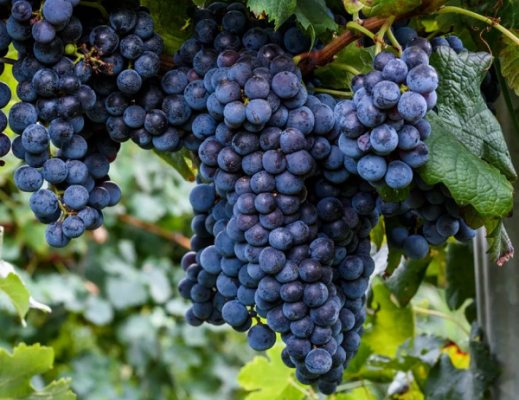
Ingredients:
- Isabella dark grapes - 10 kg
- For every 0.5 liter of juice - 50 g of granulated sugar
From a ten-liter bucket of fruit, 2 liters of red semi-sweet wine comes out in pure form.
- We collect ripe bunches of grapes in dry and clear weather. In order to preserve natural yeast on the bluish surface of berries, in no case should the raw material be washed before processing! We take a large enamel pan, in which we will prepare the intoxicating drink. We tear off the berries from the branches, remove the spoiled and rotten ones, as well as the leaves, if any.
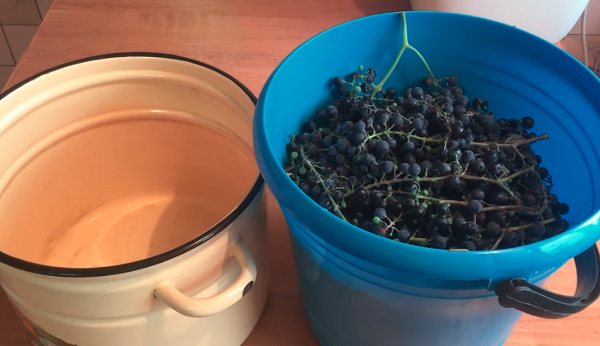

- We press with our hands, after putting on gloves. Crumple thoroughly to crush all the berries. To facilitate the laborious process, some winemakers use different devices - a pusher, a special press, or even a drill. This is especially true when wine is harvested in large quantities. You can adopt any method of processing raw materials, the main thing is not to crush the grape seeds. If you damage them, it will badly affect the taste of the finished drink - it will taste bitter.
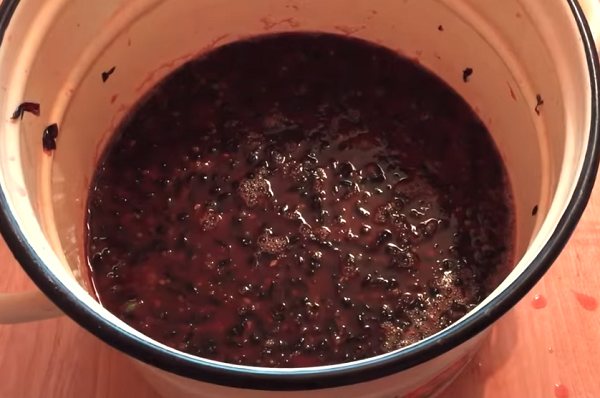

- Fill a large enamel or plastic container ¾ with pulp with juice and place for fermentation in a warm room where sunlight does not penetrate. We cover the top with a lid or cotton cloth so that dust and insects do not fall. Do not use metal containers, as oxidation processes occur upon contact with juice and this will spoil the taste of the finished drink.
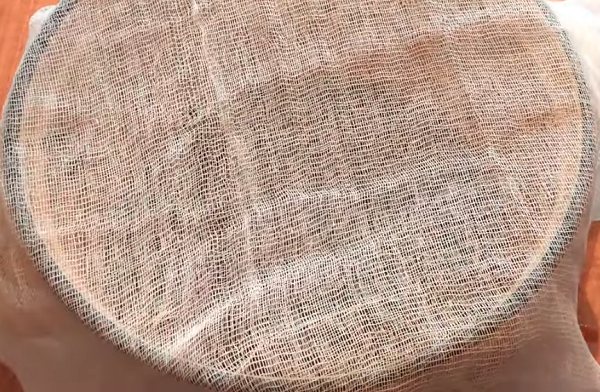

- Active fermentation takes place within 3-5 days. During this time, a foam cap rises to the surface, which must be kneaded twice a day with a clean hand or a large spatula so that mold does not settle on top and the wort does not sour.
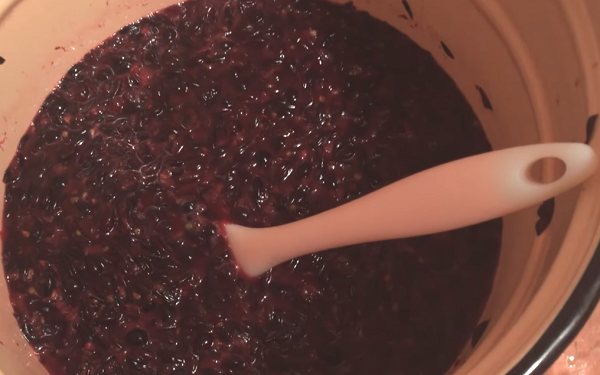

- After the allotted time, it is necessary to strain the juice with a colander and gauze. To do this, on the last day, we do not interfere with the hat, but immediately remove it.It is advisable to filter the remaining juice several times in order to properly cleanse the drink from small particles, and at the same time enrich it with oxygen, which will have a positive effect on further fermentation processes.


- The cake is no longer needed, unless, of course, you want to make chacha from it - the second wine. Pour 70% of the wort into cleanly washed and well-dried jars or large bottles. On top we put on a rubber glove with a small hole from the needle and leave it in a dark room at room temperature for further fermentation of the wine.
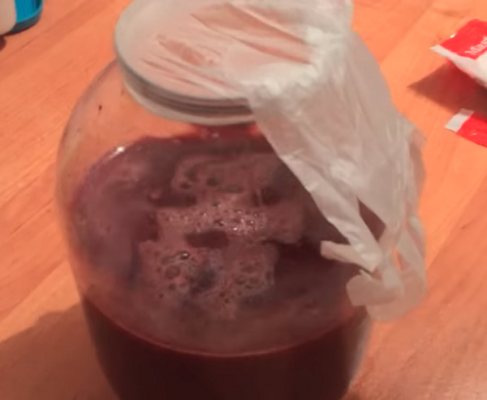

- When the drink plays off, the glove will fall off and will hang on the deflated neck. A new stage begins - the removal of young wine from the lees. To do this, use a thin silicone hose, one end of which is placed in a bottle of wine, without touching the sediment - by 2-3 cm. And the other end is lowered into an overflowing clean vessel, placing it on a lower level compared to the bottle. Suction is done and the juice immediately begins to flow easily from one container to another.


- The young wine is ready, you can pour it into bottles, let it stand for a while and you can taste it. If you want a stronger and sweeter drink, then you need to add sugar and allow it to ferment again.
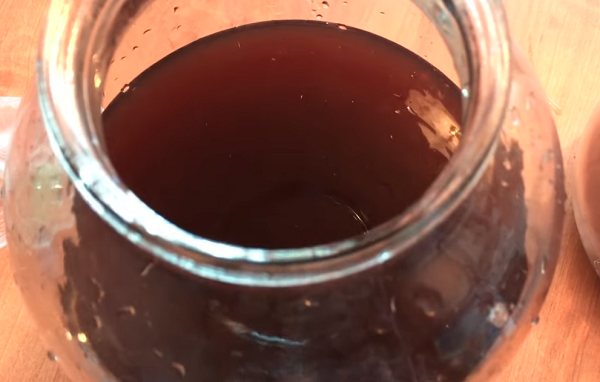

- Taste young wine, if it is sour, this suggests that over the summer the fruits of the vine have not gained enough sweetness and it is necessary to sweeten the drink.


- Stir the drink thoroughly so that the sugar crystals are completely dispersed.


- We put on a glove and give the wine the opportunity to play it again.
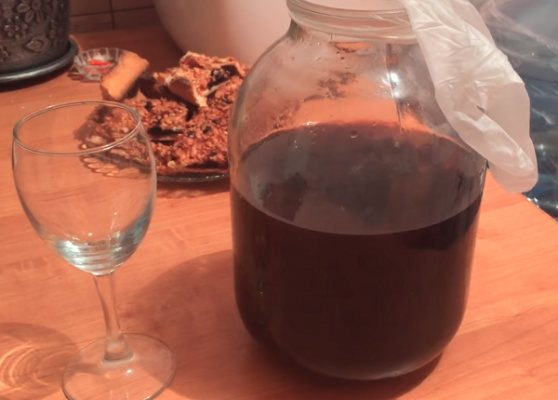

Store the finished drink in a cool and dark place; for this purpose, a cellar or closet is suitable, where the temperature does not exceed 12 degrees. Finally, the intoxicated drink will be infused in a month, maximum two. It turns out a light, transparent, beautiful wine in which you will not feel alcohol.


Make sure that the cork is screwed on properly, and then the intoxicated workpiece can stand for quite a long time - as much as 5 years. However, who can withstand that much? I think that you will find a reason to open a bottle of homemade wine much earlier.
Helpful Cooking Tips
Wine preparation has a long history, and there are many subtleties and tricks used in different regions.
The following tips will help you get original drinks with your own hands:
- some winemakers leave twigs in the wort, which add additional astringency;
- for rosé wine, mix red and white grapes in equal proportions;
- if the wine after ripening is not transparent enough, you can use artificial clarification ("pasting"). To do this, use gelatin or egg white;
- the pulp remaining after squeezing out the juice can be used to prepare spirits or secondary wine using the red method. This is how Italian grappa, Georgian chacha and rakia, popular in the Balkan region, are prepared.


White wine can be made from different grape varieties and, depending on the recipe, you can get a drink of different sweetness levels. Homemade winemaking allows you to control the naturalness of the ingredients and experiment with obtaining the original taste.
Grape wine with added water and sugar in the correct proportions
When making homemade grape wine, many wonder whether to add water to it. Experienced winemakers believe that after adding water, the drink turns out to be less acidic, and its quantity also increases. The main thing is that the addition of water and sugar is in the correct proportions. Only then can you get an original drink with good taste.


We need:
- Grapes of any variety - 10 kg
- Granulated sugar - 2 kg
- Warm water - 6 liters
- We sort out the harvested grapes - removing the spoiled berries and tearing them off the branches. We carefully mash with our hands the fruits donated by the vine, in their original form (without washing with water), in order to preserve the natural yeast on the skin. We send the pulp to ferment in a large saucepan for three to four days.
Do not forget to stir the berry mass twice a day with a wooden long stick or spatula.
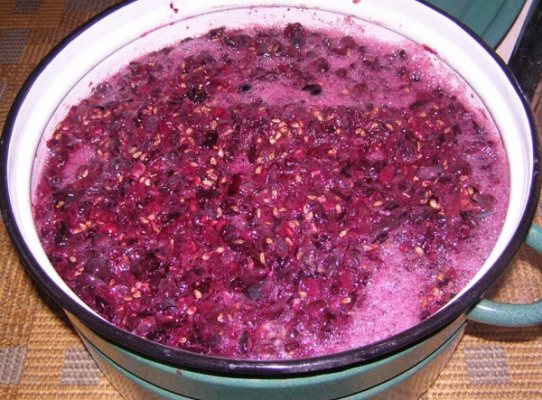

- After the specified time, we squeeze the pulp from the juice. Pour the latter into a large bottle or pour it into glass jars. The cake can be immediately processed into secondary wine (chacha) or thrown away.


- In a separate enamel pot, heat the water to a warm state and dissolve the sugar in it. Pour the cooled syrup into the grape juice.


- On a bottle or cans we put on a seal or a rubber glove with a hole pierced in one of the fingers. Leave the drink in a warm place to ferment again. When the inflated glove falls off, and gas bubbles stop coming out through the water seal, it means that the wine has played. The sediment will be clearly visible at the bottom. Now you need to drain the drink into any clean container using a thin silicone hose, so that the sediment remains at the bottom.
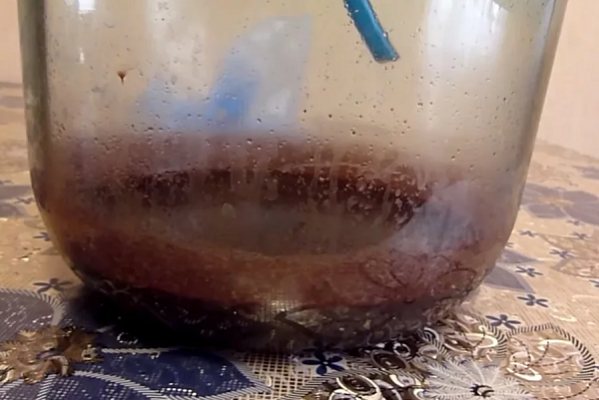

- Try young wine, you may want to add sugar to it. Put on the water seal again and place the vessels with the intoxicating drink in a dark and warm place for fermentation for 2-3 weeks.


- Once again, we rid the lighter drink from the sediment formed at the bottom and pour it into sterile bottles, which we screw with lids.
We keep the wine for 3-4 months at a temperature of 12-13 degrees and you can enjoy your homemade low-alcohol drink!
Preparing dishes and tools


You should try to avoid contact of juice or grapes with metal containers and objects. Therefore, copper or lead-plated dishes are categorically unsuitable. At home, wine is recommended to be made and stored in glass, ceramic, enamel or wooden containers. As a last resort, plastic is suitable.
Before starting cooking, the dishes must be thoroughly washed with baking soda and rinsed with running water.
If you will be using wooden barrels at home, they should be fumigated with sulfur first. The most convenient and affordable option will be to use glassware - 10 and 20-liter bottles are not so difficult to purchase.
All metal tools must be made of stainless steel.
How to make wine from grapes of the second pressing (from cake)
In winemaking, cake separated from grape juice is considered a waste, usually it is thrown away. But from the grapes of the second pressing, a magnificent light wine is obtained. Alcohol in this case turns out to be not so strong and will certainly please the fair sex.
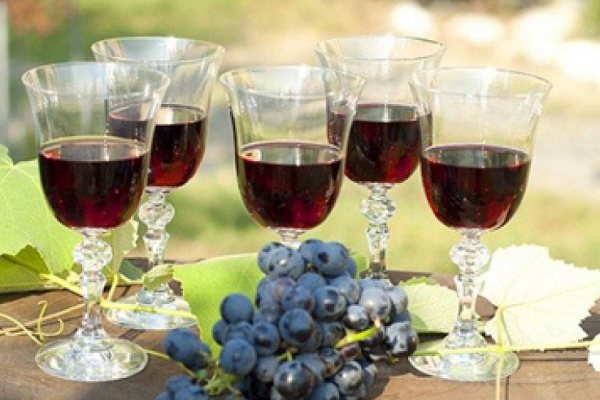

The technology for making secondary wine is not complicated, but there are several nuances that you need to pay attention to.
Ingredients:
- Grape cake - any amount
- Water - 800 ml per 1 liter of cake
- For 1 liter of water - 150 g - 200 g of granulated sugar (depending on the sugar content of the berries)
- If you want to make secondary wine, then when you squeeze the crushed berries from the juice, you should not do it fanatically. Let the pulp (grape pomace) be with a little juice.
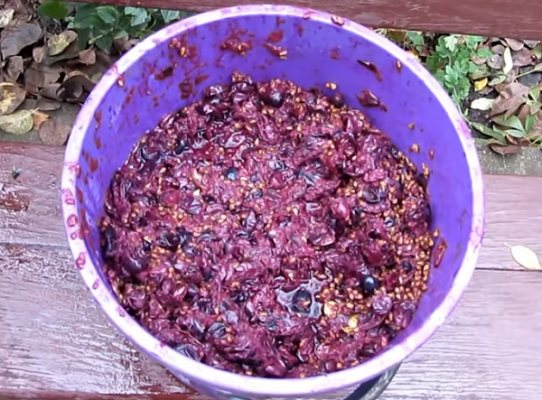

- Fill the cake with sweet syrup, which we prepare from the right amount of water and sugar.
To make the granulated sugar dissolve faster, the water can be slightly warmed up.
Cover the container with gauze on top and leave it in a warm place to ferment. If the heating has not yet been turned on and it is cold in the room at night, you can wrap the berry mass in a blanket.
Open the cheesecloth twice a day to mix the wort with a wooden spatula.


- In our case, the cake will ferment longer than the pulp used to make the primary wine.After about 6-7 days, you will see that the fermentation processes have begun to decline, which means you can squeeze the grape mass. Armed with a sieve covered with gauze on top, filter the juice and then pour it into clean jars or bottles, and discard the cake.


- The volume of containers filled with juice should not exceed 75%.


- Drain part of the juice into a separate saucepan, dilute sugar in it at the rate of 100 g per 1 liter of wort. Pour the sweetened syrup back into the jar and put on a water seal or glove with a small hole in your finger.
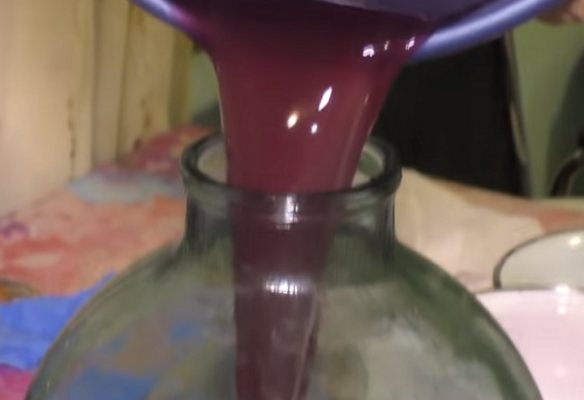

- We place the jars in a warm place so as not to disrupt the normal fermentation process.


In a few days, the wine will win back and the glove will deflate, and gas bubbles will no longer come out through the water seal. So the yeast has converted all the sugar into alcohol. We taste the drink, sweeten it again if necessary and set it to ferment. - Now, when the young wine has played, and the taste of the drink suits you completely, you need to drain it from the sediment. Then it is good to seal the vessels with lids and lower them into the basement or cellar for the final aging of the wine.
If you have cans, you can close them with plastic lids.
- After 10-14 days, a sediment again forms at the bottom (2-3 cm thick). It will be necessary to repeat the draining procedure. Do this until the drink is fully ripe and clear. Store it later in the cold - basement or refrigerator.


The wine turns out to be of a beautiful rich color and pleasant sweetish taste and is no different from a drink prepared with pure grape juice.
What is a drink
By definition, wine is an alcoholic grape drink made by fermenting juice. During the preparation process, you can add alcohol, but in this case, you will get a fortified wine. In order to get a classic grape wine, the alcohol released during natural fermentation is quite enough.
People began to make such drinks from the most ancient times. People have long noticed that in sweet juices, over time, the fermentation process begins, which is due to the multiplication of yeast fungi in the liquid. Under favorable conditions, yeast multiplies at a fairly high rate. This fact is an important point in winemaking. In addition, it is necessary to prevent the development of organisms that are similar in principle of action, but belong to acetic fermentation fungi.
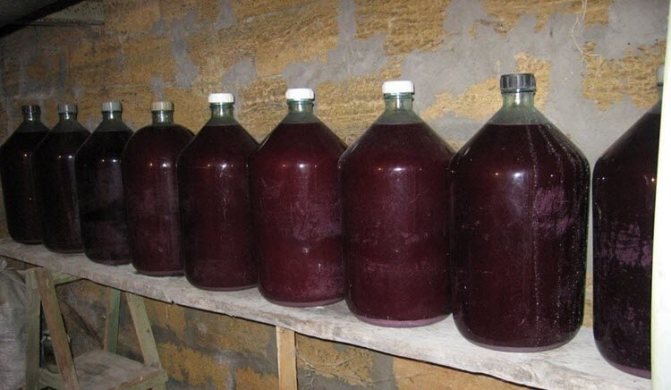

The homemade grape wine is divided into several categories with regard to their sugar content. This classification is familiar to everyone.
- Dry wines, sugar content does not exceed 1%. In this case, there is no sugar indicator on the factory packaging.
- Semi-dry ones contain slightly more sugar than the first option, the value fluctuates within 2-3%.
- Sweet dessert wines contain up to 30% sugar.
- And the sweetest wines are liqueur. They have the highest sugar content - over 30%.
The most difficult thing is to make semi-dry and dry wine from grapes at home. This is due to the fact that these drinks are more prone than others to the occurrence of various diseases, because there is practically no natural preservative in them.
DIY white grape wine - recipe for 20 liters
White grape wine is considered an exquisite alcoholic drink that will be appreciated by gourmets. Usually, grape varieties such as Riesling, White Muscat, Chardonnay, Aligote and others are used for its preparation. The white drink has a delicate and delicate taste, there is no astringency in it.


Ingredients:
- Grapes - 40 kg
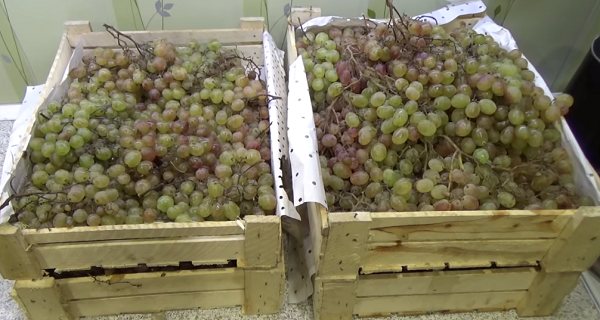

- We immediately mash the grape bunches with our hands (you do not need to wash them, let the natural yeast on the surface help). Along the way, we remove spoiled berries and rotten ones.
You do not need to be very zealous, as damaged branches or seeds can add bitterness to the taste.
- Place the crumpled grapes in a large container, then cover with gauze or put a lid in a warm place.
Choose a suitable fermentation container - it does not need to be filled to the top, leaving 1/4 part for the ascending cap.


- The fermentation temperature of pulp from white grapes is lower than from dark varieties and is 18-22 degrees.
To prevent the berry mass from souring, it is necessary to stir the cap rising to the top 2-3 times a day.
After 5 days, the fermentation processes will subside and you can separate the pulp from the juice. Therefore, on the fifth day, we do not mix the cap, but immediately remove it from the container. We filter the juice through a sieve covered with gauze and pour it into a 20 liter bottle.


- We install a water seal on top of the neck and send the wine to ripen for 2 weeks in a warm place.
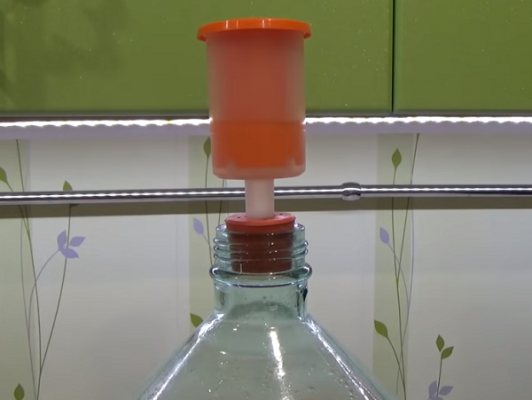

- Two weeks later the wine played off - it became lighter, and a characteristic sediment is visible at the bottom of the bottle. We have to drain it now.
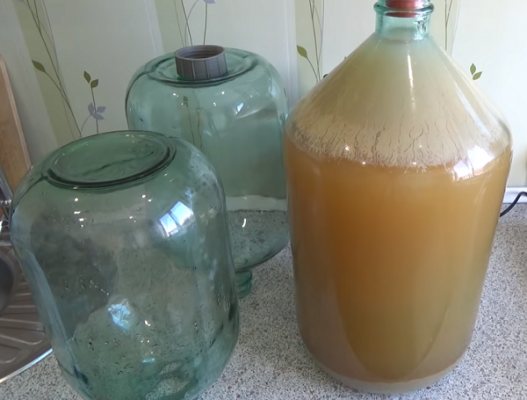

- To do this, we will prepare cleanly washed and dried glass vessels, which we will set on the lower level. We put the silicone tube into the bottle without touching the sediment, and point the other end down, as shown in the photo.
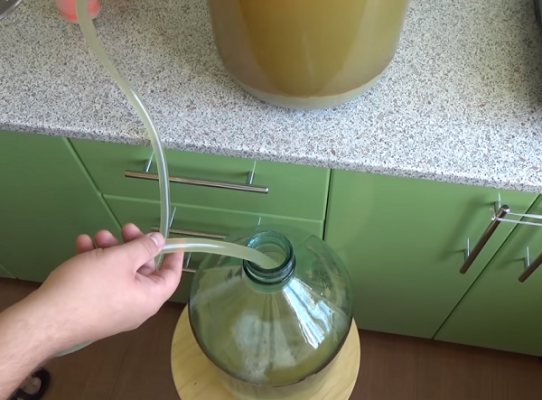

- The wine can already be tasted, it is not yet fully ripe and therefore not entirely transparent. We carry out a taste test and, if required, add sugar. In our case, the drink tastes completely sour. It turned out to be a very pleasant, aromatic dry white wine.
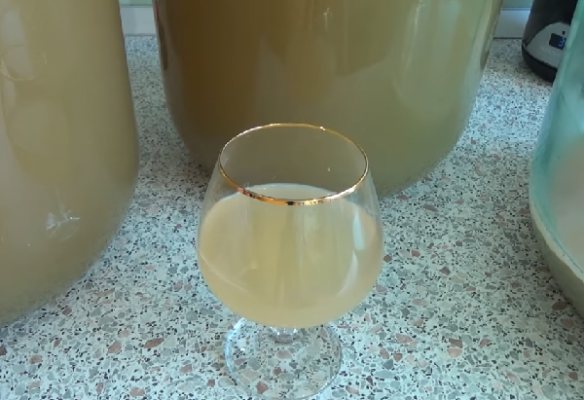

Fill a cleanly washed bottle with drained wine. We set it to ripen for another month under the water seal. At this time, quiet fermentation processes will take place, as a result of which the wine will become more transparent, and a sediment will again fall out at the bottom, but no more than 1.5 cm. The drink should also be drained from the sediment and poured into a clean vessel, closing with a regular lid. We send for two weeks to a cool and dark place. Then bottle the drink and store it in the cold.
The main differences in the technology of making white wine
The variety of wine served in a restaurant should complement the selected dishes, reveal their sophistication. White wine differs from red wine by the color of the grapes used. White wine has a more delicate and delicate taste, devoid of the astringency of the skin of the berries. The skin also contains coloring pigments, which are absent in white wine. Consequently, the main technological difference in the preparation of white wine is the exclusion of the squeezed juice contact with the skin of the berries.


White grapes with low acidity are suitable for white wine. Classic recipes do not involve the addition of sugar, as the berries are assumed to be sweet enough. In any case, the amount of added sugar to homemade white wine is negligible.
Recipe number 7


Grape juice can also be used for home winemaking.
Recipe number 7 Components:
- Grape juice - 3 l
- Sugar - 0.8 kg
- Dry yeast - 1.5 tsp
- Water - 4 glasses
Process:
- Granulated sugar dissolves in boiling water. Next comes the juice, yeast, which must be dissolved in 1 tbsp. l. water. Everything mixes well
- The prepared liquid is poured. A glove is installed on the container. The procedure will take 24 days
- The prepared drink is carefully drained to preserve it. It can also be consumed immediately
back to menu ↑
Read also: TOP-6 Recipes for making pork jamon at home: a step-by-step description of how to make a meat delicacy from Spain + Reviews
General steps
Read also: TOP-3 Recipes for homemade wine from Isabella grapes: white, rose and red + Reviews
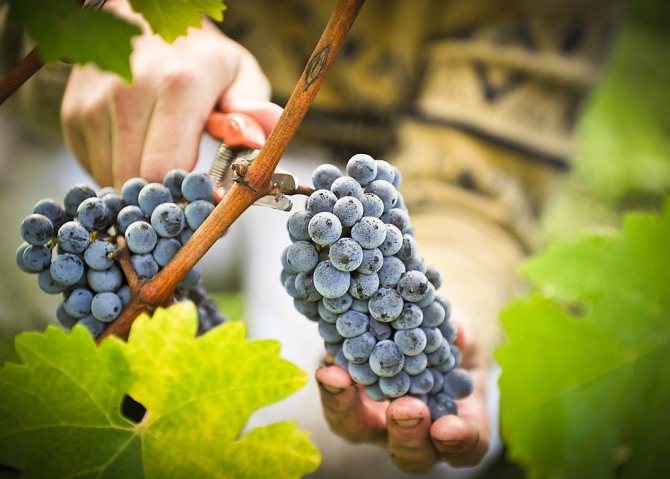

Especially careful selection
To properly make homemade wine, you must strictly follow the following steps:
- The berry is selected with great care. It should be without blackness, rot. Not washable, because there is wild yeast on the skin. All branches are removed
- The wort is being prepared. To do this, so that the drink does not taste bitter due to crushed seeds, the berry is crushed by hand or with a special press.
- The berry mass must settle, so it is left for 2 days.
- Container is being prepared, which is well washed with soda, sterilized
- Strain through a clean napkin, squeeze out the liquid part of the berry mass. Everything is poured into prepared dishes. Granulated sugar is added if necessary
- A water seal or glove is placed on the container
- Everything is set aside for a while until the drink has finished fermenting. The room should not be cold and dark.
- Then the wine is poured without loosening the sediment from the bottom of the container. For this, a special tube is used in the shutter.
- Before drinking, the finished drink must be ripe. Therefore, it is packaged and removed for 1-2 months.
back to menu ↑
See also: Homemade wine from jam: 7 simple recipes for everyone
Getting juice
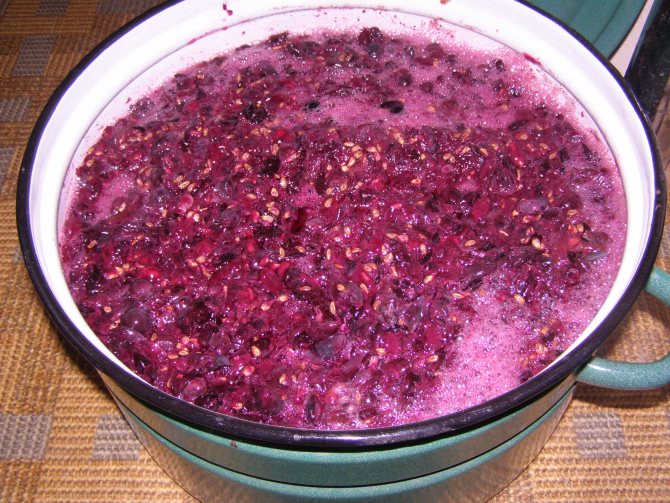

On the 3rd - 4th day of fermentation, it is necessary to separate the juice from the pulp, for this we remove the “cap” in a separate container and squeeze it out. Next, we filter all the resulting juice through cheesecloth into large vessels with a narrow neck (this can be, for example, a can). They should be filled to a maximum of 70% of the container volume. You can now add water if the grape juice is too sour and cramping.
Choosing the right crop for your wine
To make grape wine (and not only homemade) really tasty and aromatic, it is necessary to use exclusively high-quality and, most importantly, the right product - wine varieties to create it.
Berries of these varieties are characterized by their small size and density of arrangement on a bunch. Below are some valuable tips from experienced winemakers regarding the selection and preparation of wine materials:
- Exceptionally ripe grapes are suitable for making wine: unripe will give the final product an unpleasant bitterness, and overripe will give the final product an unpleasant taste of vinegar.
- The grapes must be dry. If the vine was watered with rain only a couple of days ago, you cannot pick the berries while they are wet.
- Falling berries are completely unsuitable for wine: the wine will have an earthy aftertaste.
- Berries should be used immediately after cutting from the vine or no later than 2 days after they were picked. Otherwise, the fermentation process will begin earlier in the berries.
Advice. The grapes harvested for making wine should not be washed, because the white bloom that forms on it is nothing more than wine yeast. It is possible to rinse or even wash the grapes only when a starter culture with high-quality wine yeast is used.
The harvested grapes should be separated from the ridges, sorted out, removing all unsuitable, including dried and moldy berries. After preliminary selection, the berries are poured in small batches into a deep container and crushed. You can use a regular potato crush or meat grinder. The berries should be crushed very carefully so that each of them gives off all its juice.


